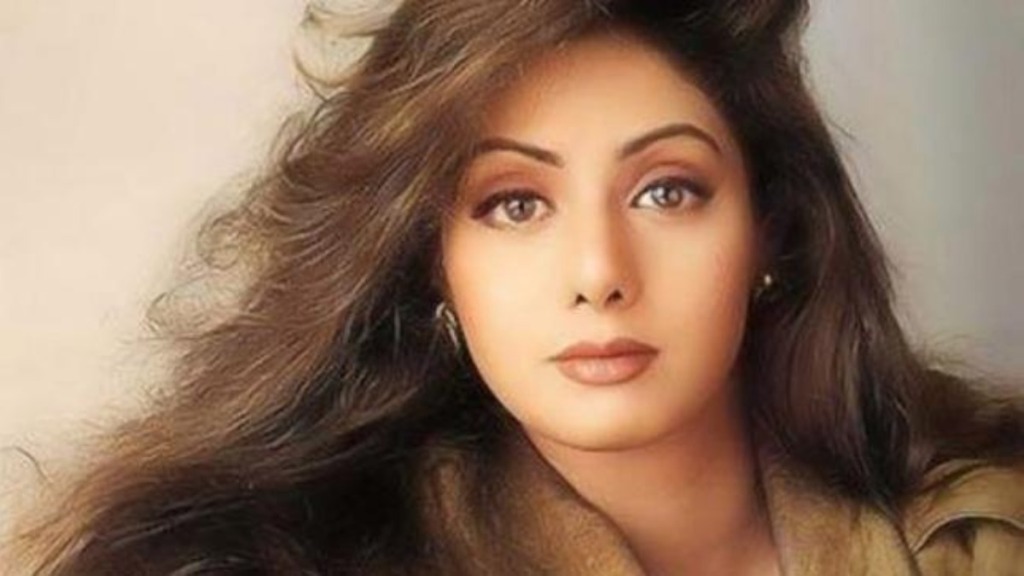Tags
amitabh bachchan, chaalbaaz, cinema, gair kanooni, govinda, khuda gawaah, Movies, sridevi, sultanat
It was February, 2020. On a whim I signed up for an acting workshop at a local acting institute. In the first few minutes of the first day of the workshop, the instructor laid out the craft of acting as comprising of merely two things:
1) Acting is about making the audience believe in your character, regardless of whether you believe in the character or not.
2) Acting is about using the one tool you have at your disposition to achieve point 1 above – your body (your voice is part of the body)
That’s all, that’s acting, she said. One can intellectualize it all one wants, but it came down to these two things. This made me think of one of my favorite actors, and if she applied these two tenets to her craft. The answer was a resounding “yes”. Of what I have seen of her, she has followed these two tenets like an obedient child. It could be because she started acting at the age of 4, and learned her craft on the sets. She didn’t learn it in acting schools, or didn’t talk about acting. She acted. As a result, even in her grown up performances, she didn’t care if the character was poorly written, or the movie it belonged in was garbage – she showed up and did what was needed with full honesty. When the camera was on, she was ON. There was no two ways about it, the camera demanded her to be committed and commit she did.
I am of course talking about the “Sridevi”. It will be over two years since Indian cinema lost one of its brightest star. A star who was also an actor in the purest form – a rare combination in the Indian cinematic universe, where too often, stars and actors are two different breeds. Sridevi faced the camera at the tender age of four and since then, she grew up in front of the camera. Her life, until she got married was about going from one set to another. As a child actor, she must have just followed the cues from her directors – play happy now, you are sad here, you are afraid there, and so on. So she rote those emotions and tried to project them the best she could. Imagine a child learning the multiplication tables or poems for school. She never intellectualized what the scene demanded, she reached for the core emotion of the scene, brought it out and projected it. This isn’t just my speculation, Sridevi has said it a number of times. She insisted that was no method, no preparation. If you think of this approach, its pretty primal. Its like life, we don’t usually go about our regular day intellectualizing our actions or reactions. She did just that – be in that moment of that character and project the emotions with sincerity and purity.

Sridevi’s major (adult) work is from mid 1970s through the mid 1990s. In these twenty years, Sridevi ruled the box office in Tamil, Telugu, Kannada, Malayalam, and Hindi cinema. And I don’t use the term ruled lightly. She made the box office ring when she headlined a movie in three of the largest film industries of India, a feat no other actor has achieved. She filled the seats in the cinemas. A Sridevi movie meant guaranteed return on the investment. Why did people like her? Of course she was stunningly beautiful, but beyond her beauty, it was her sincerity in doing whatever she did on the screen that made her spin her web on the audience.
She also revived the sagging careers of many a middle aged male actors in Hindi cinema (Rishi Kapoor, Jeetendra, Rajesh Khanna, Vinod Khanna). She came at a time when the creativity in commercial Hindi cinema was at its nadir and women in Hindi cinema were mere props for titillation. In this climate, this girl who had no knowledge of Hindi, blazed a trail of her own and emerged as the most successful actor of her times.
A lot has been written about her iconic performances in Tamil, Telugu and Hindi films. Where I want to draw attention are the many mediocre movies she was a part of. Since her passing, I have been trying to go through some of these movies. The movies are a pain to sit through, mostly because of their hair brained plots, loud music, and horrendous regressive treatment of women. However, what I notice is, even in these movies, Sridevi shines bright. Her approach to her acting remains true to the two principles above.
Take Roop Ki Rani Choron Ka Raja – You just have to take a look at the campy song “Dushman dil ka jo hai mere”. She has been wronged by the villain (played by Anupam Kher) and is engulfed with fiery vengeance. Watch her climb down the stairs to the beat of the song, watch her physicality in these few seconds and then the anguish she channels through the combative choreography. She makes you buy into the campiness with just the right dose of ferocity.
It’s this basic quality that makes her performances feel sincere than high art.This kind of acting often does not get the credit that the performances of “thinking actors” in high-art movies get. However, it is this simplistic and honest approach to any role, that makes Sridevi a more complete actor in my regard. This made her to not look at one character as special over another. All the roles she played came from the same place of honesty to her craft. She didn’t see the complex character of Reshmi from Sadma as any greater than say her over-the-top Radha in Himmatwala – both movies came out in the same year. Or say her immaculate balancing act of Pooja and Pallavi in Lamhe versus her double role in the atrocious Banjaran – again from the same year. There was much speculation if she would be able to adapt to the acting styles of the 21st century when she decided to make a comeback after a 15 year hiatus in 2012 with “English Vinglish“. She laid all those speculations to rest, by once again just doing what she does best – show up on the set and act with the utmost sincerity using the tool she has.
Sridevi stayed true to this until her last film “Mom” (allegedly her 300th film) – she was still that 4 year old child applying the two principles of acting, every single time she heard “Lights! Camera! Action!”
Below is a sampling of some of her lesser known songs through which you can get a glimpse of her commitment to her craft.
Nako Baba Nako Baba
Govinda and Sridevi are truly two of the best dance-acting actors of Hindi cinema. Their spontaneity is on full display in this song. They seamlessly move from one folk dance form to another while maintaining the frothiness quotient.
Bhoot Raja
This one should be a lesson in dance-acting. Sridevi uses her entire body in an unabashed wild manner. She uses the space in the frame, the extras around her, the props that she grabs occasionally, while emoting to what the lyrics are conveying. Watch her when she comes across a snake and then falls flat on the ground only to convulse and then get back into the song. Now think of when this was shot, she knew what to do, when to look at the snake and act terrified. All of this is rehearsed and yet what shows on the camera is as if she is doing this for the very first time. She is un-inhibited in her movements, and yet there is a grace in her movements (not to mention doing all this while wearing a saree). I don’t exaggerate when I say, you won’t find another actor who can pull this song with such rawness.
Tarpat Beete Tum Bin Yeh Raina
Sridevi never got training in any dance form. She learned from observation and practice. You won’t believe a word of this when you watch this number. She combines the classical dance forms of Kathak, Bharatnatyam, Kuchipudi with standard issue semi-classical Hindi film dancing. Her form is like those you see in the temple carvings of ancient India – seductive and traditional at the same time.
Deewana mujhe kar gaya
This is the other version of the more popular “Tu na ja mere badshaah” from Khuda Gawaah. Here Benazir is being reunited with her husband Badshah Khan, after decades of being apart. Watch how she conveys her desperation in the first segment when she is trying to revive an injured Badshah Khan. And then in the second segment watch her walk towards Badshah Khan with arms wide open, these last few steps seem like a tortuous journey after waiting for decades to meet the love of her life. There is anticipation, joy, pain all bundled in her entire body, in her gait and in her eyes.
Kya hoon main
A standard 1980s trope of the heroine dancing in the villain’s lair. Watch how she projects her bad-ass attitude through the awkward choreography. Give this to an average performer and this becomes an unintentionally funny sequence. Sridevi elevates this with her complete commitment and a knack to make her body and face project the emotions expressed in the lyrics – no matter how campy they are.
Jaamu Rathiri
This is a very popular song from one of her huge hits in Telugu. The Hindi audience may not be very familiar with the song. There isn’t much happening in this song – physically. She is mostly seated in one place. Watching her face is as if you are watching a piece of art taking shape – its like a canvas that keeps painting itself with a gamut of emotions – trepidation, fear, relief, peace, shyness, drowsiness. Its minimalism done to perfection.
Jai Laxmi
Sridevi is pure comedic gold in this forgotten song. Had this song been in a more deserving movie, it would have been more popular. In an era when over the top acting was the norm, Sridevi manages to bring unadulterated comedy without resorting the ham-handed approach of her male colleagues of the 80s. She uses slapstick and commits to the farcical nature of the premise of the song where she is enacting to be the idol of the goddess Laxmi to rob the devotees of their offerings. It is quite unfortunate that Sridevi’s talents for comedy were reduced to set pieces or songs in many such pedestrian movies. Even with such mediocre material, she kept hitting it out of the park. Imagine if other departments of her movies were of a higher caliber! Just Imagine. Well, we will have to settle for this.
